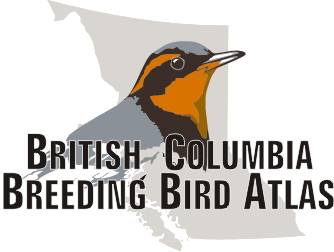A breeding bird atlas is a book which describes all of the birds that have been recorded breeding within a specific region. This book is assembled from a very large collection of records compiled by birdwatchers in that region during a specific time period. To do this for an area the size of a state or province, an army of volunteer birdwatchers spreads out over the area for a certain time-period, usually 3 to 5 years, and collects information about the breeding status of each species in that area.
The end result is the most complete record of bird species for that area. As such, the atlas can describe several factors about that bird population, like its diversity and population density. Most importantly, bird atlases provide information on the distribution of bird populations, including their current and historic ranges, long-term and short-term changes within those ranges and the occurrence of disjunct (isolated) populations.
The Purpose of Atlas Projects
The basic objectives of all bird atlas projects include:
- To produce a comprehensive picture of bird distribution and abundance in a specific area within a specific time frame.
- They mobilize volunteer bird watchers, who collect data on the distribution and abundance of birds in a scientifically acceptable manner.
- Repeated over time, bird atlases can identify changes in bird abundance and distribution.
- They can help determine if any changes in bird populations are related to natural or human-induced changes in environmental conditions.
- They increase the level of understanding about the ecology of the region.
- They can be used as a monitoring tool for conservation and population management purposes.
- They are an important component of wildlife management plans.
Why Updated Atlases are Needed
While producing a bird atlas for a region is a huge accomplishment, an even greater contribution to bird science can be made by repeating the effort. A second, updated bird atlas for a region has many benefits.
Perhaps the greatest value of an updated bird atlas is the contribution it will make to wildlife conservation; it is essentially a project which can identify areas of high bird diversity which are worth protecting. When compared to data from the previous atlas project, the updated bird atlas can provide valuable insights into changes in the distribution and abundance of birds within a region, and the possible causes of such changes.
This was the case in Great Britain and Ireland, where an Atlas Update Project highlighted many changes in the populations of breeding birds over the twenty-year period between the first and second atlases.
Information from an updated atlas will also provide further information on the distribution of endangered species and their habitat requirements, and will identify “hot spots” used by a large number of breeding or migrating species. This information can be used by resource management agencies and conservation biologists to develop management and conservation plans, and to identify areas crucial for protecting birds and their habitats (eg., the Important Bird Areas Program).
Benefits of an updated Bird Atlas
The many benefits which will result from this Project include:
- determining the current distribution and abundance of all breeding bird species,
- serving as a method for documenting trends in breeding bird populations over time,
- facilitating the development of predictive models which relate bird distribution and abundance to habitats and land use patterns,
- aiding the development of environmental impact assessments, resource management plans and conservation plans for wildlife and wildlife habitat,
- helping make all project-related information and data models readily accessible to the public and resource industries,
- providing better information for environmental assessments, resource development projects, etc.,
- providing information to naturalists interested in observing wildlife,
- providing data to scientists conducting ecological research,
- identifying biologically significant areas, which can then be designated as Important Bird Areas,
- encouraging citizens to participate in nature-related activities, and
- contributing to an increased understanding of the natural heritage of our planet.

